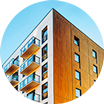Get to know Paterson, NJ
Paterson, New Jersey is the third most populous city in the state and the county seat of Passaic County. The area was originally inhabited by the Lenape Native American tribe before being claimed by the Dutch and subsequently the British. In 1791 the Society for the Establishment of Useful Manufactures was set up by Alexander Hamilton to support economic independence from Britain. The society founded Paterson as it sought to harness the energy of the Great Falls of the Passaic River. It was named for New Jersey Governor William Paterson who signed the town charter in 1792. The City of Paterson was incorporated in 1861. The Great Falls helped drive industrial development as mills populated the area for the Fall’s energy. In addition to textiles, firearms, silk, and railroads benefited from the energy harnessed from the Great Falls. The second half of the 19th century brought great prosperity to the city from the silk industry, leading Paterson to be known as “Silk City”. The city attracted immigrants looking for work in the factories. Paterson saw historic labor unrest in the 20th century, particularly over child labor legislation. The famous Hinchliffe Stadium was built in 1932. Today it is one of only three remaining Negro League stadiums in the United States and is on the National Register of Historic Places. The city boomed during World War II as an aircraft engine manufacturer, but the white flight following the war has left the city in decline since the 1960’s. Today Paterson’s economic base rests on small businesses. The steady flow of immigrants to the city has helped to revive the city and its economy. Notable attractions include the Lambert Castle Museum and the Great Falls. Famous residents have included comedian Lou Costello, who was born in the city, and writer Allen Ginsberg.
Quick Facts
Population: 146,987
Median Household Income: $32,915
Median Property Value: $246,700



